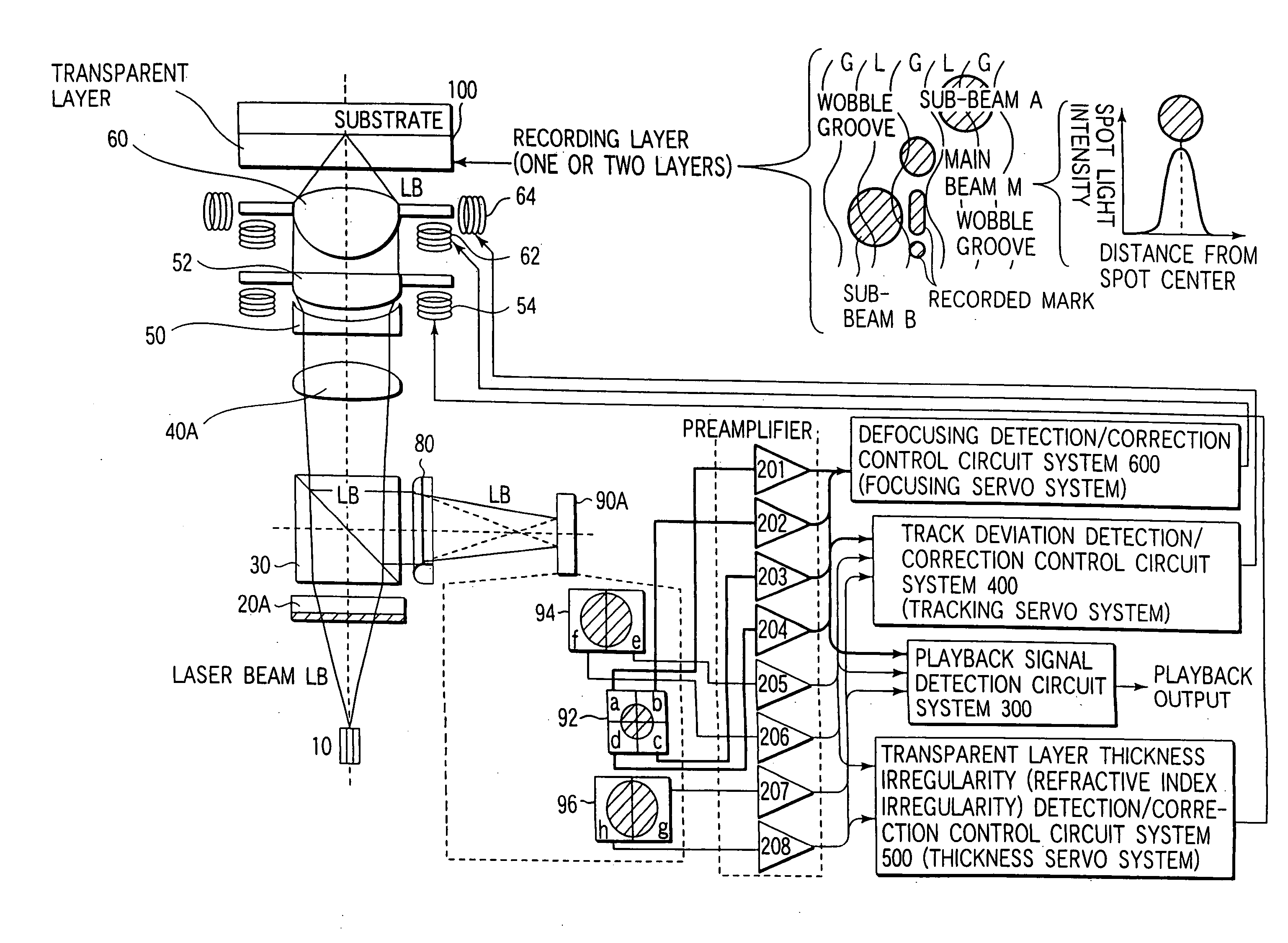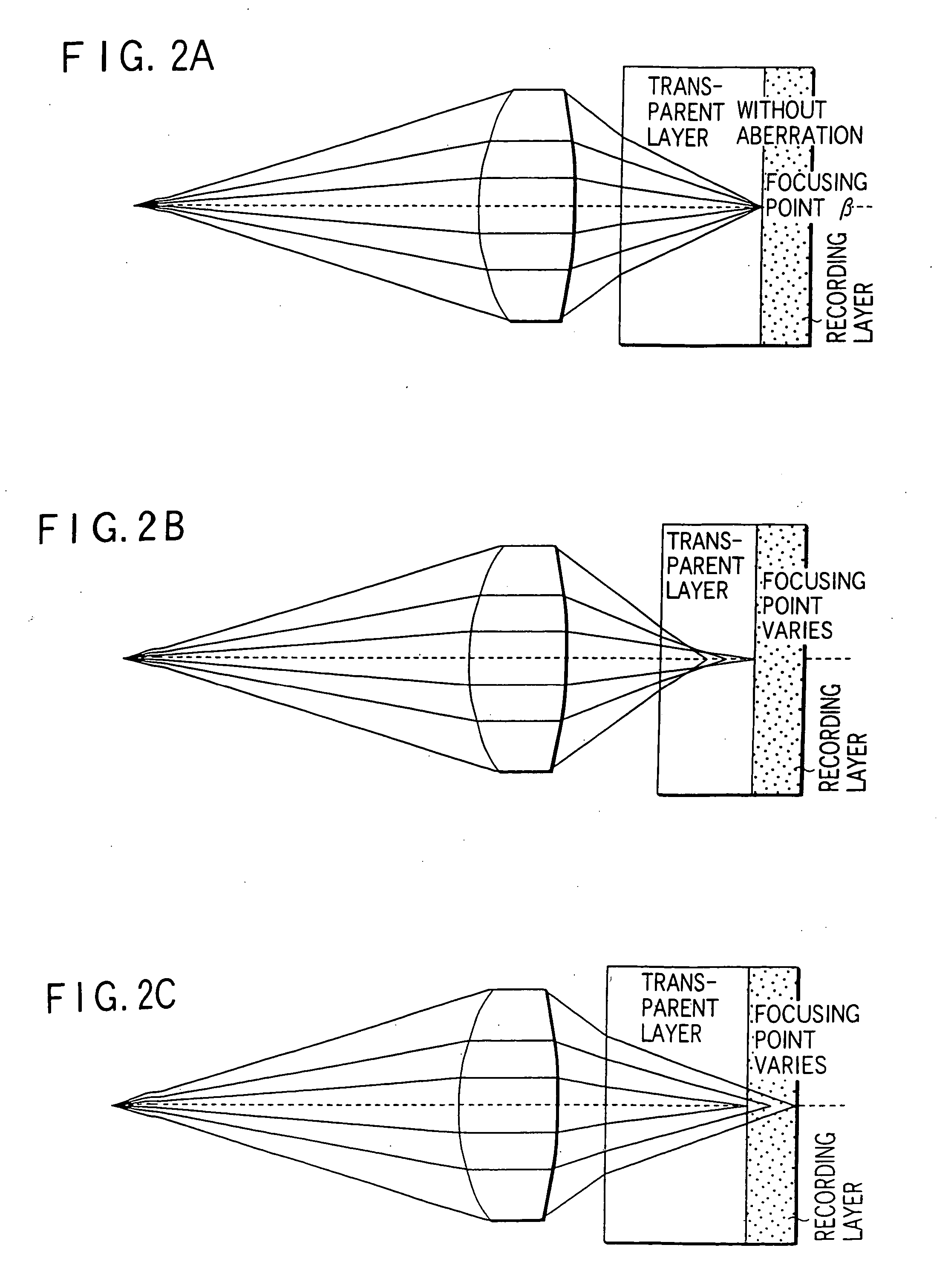Optical information processing system using optical aberrations and information medium having recording layer protected by transparent layer having thickness irregularity
- Summary
- Abstract
- Description
- Claims
- Application Information
AI Technical Summary
Benefits of technology
Problems solved by technology
Method used
Image
Examples
Embodiment Construction
An information playback apparatus (read-only optical disk drive or optical disk player) for playing back information recorded on an information medium (optical disk) by using focused light (laser beam) or an information recording / playback apparatus (readable / writable optical disk driver or optical disk recorder) for recording / playing back information on / from an information medium generally has, for example, the following functions: (a) the focus correction function (focusing servo) of matching a reflecting or recording layer position of an information medium to the focusing point position of focused light; (b) the track deviation correction function (tracking servo) of making focused light trace tracks concentrically or spirally (helically) formed on the reflecting or recording layer of an information medium; and (c) the tilt correction function (tilt servo) of making correction for the tilt of the reflecting or recording layer of an information medium which is caused by warpage...
PUM
 Login to View More
Login to View More Abstract
Description
Claims
Application Information
 Login to View More
Login to View More - R&D
- Intellectual Property
- Life Sciences
- Materials
- Tech Scout
- Unparalleled Data Quality
- Higher Quality Content
- 60% Fewer Hallucinations
Browse by: Latest US Patents, China's latest patents, Technical Efficacy Thesaurus, Application Domain, Technology Topic, Popular Technical Reports.
© 2025 PatSnap. All rights reserved.Legal|Privacy policy|Modern Slavery Act Transparency Statement|Sitemap|About US| Contact US: help@patsnap.com



